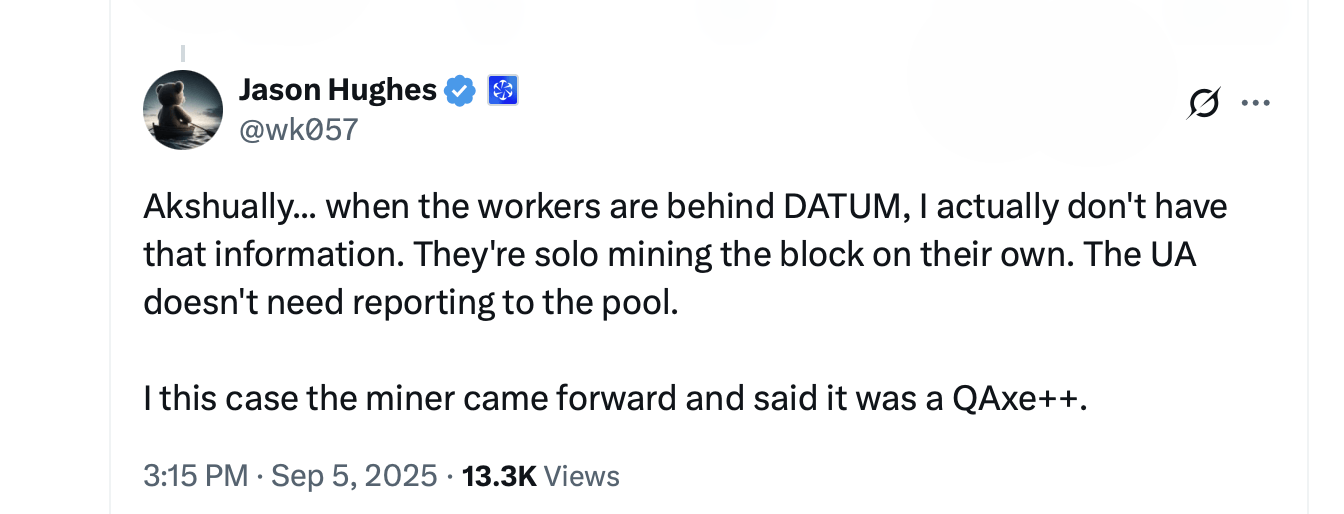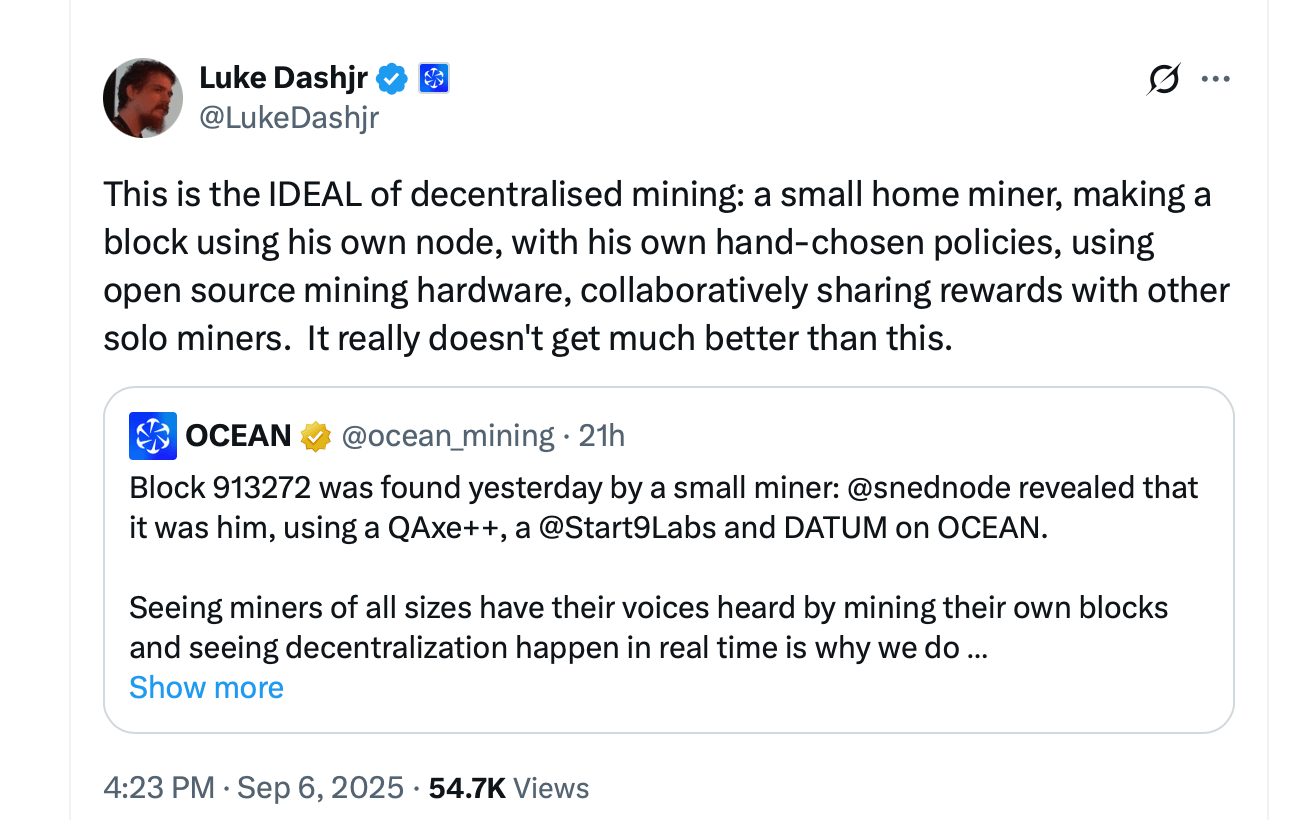On social media, people have been discussing how a small miner struck a block through Ocean Mining’s solo setup and the DATUM (Decentralized Alternative Templates for Universal Mining) protocol.
The system connects mining hardware with a Bitcoin full node — in this instance, Start9labs infrastructure — enabling direct block submission and instructions without any middleman oversight.
On X, Ocean Mining posted:
Block 913272 was found yesterday by a small miner: @snednode revealed that it was him, using a QAxe++, a Start9labs and DATUM on OCEAN. Seeing miners of all sizes have their voices heard by mining their own blocks and seeing decentralization happen in real time is why we do this.
A Nerdminer QAxe++ runs at roughly 4.8 terahash per second (TH/s) while drawing about 72 to 76 watts from the wall. It uses the same semiconductors found in Bitmain’s Antminer S21 Pro series, though the S21 Pro cranks out about 229 TH/s more than the QAxe++.

The VP of Development and Engineering at Ocean Mining reported that the miner disclosed it was a QAxe++ miner.
If combined in a pool, this hashrate could generate about $0.26 a day in profit at an operating expense of roughly 0.04 per kilowatt hour (kWh). Still, many pools enforce strict minimum hashrate thresholds, pushing small miners toward pools that don’t set such requirements.
Pools such as Ocean and Solo CKPool don’t impose a formal minimum hashrate to participate, and they’re built specifically for miners aiming to go solo, but also pool hash as well. Still, with very low hashrates (below 100 GH/s or 0.1 TH/s), the chance of finding a block becomes effectively zero at those levels.
And even 5 TH/s is extremely difficult. To put the odds in perspective, the global Bitcoin network’s hashrate stood at roughly 960 exahash per second (EH/s) when block 913272 was discovered. A 5 TH/s Nerdminer worker represents just 0.0000000052% of that total. At the current difficulty of 136.04 trillion, finding a valid block requires about 5.84×10²³ guesses.

At 5 trillion guesses per second, it would take that miner around 3,700 years to find a block on average. Statistically, the chance of hitting even one block in a full year is about 1 in 3,700. In a single day, it’s closer to 1 in 1.35 million.
Yet, against all these astronomical odds, this baby ASIC device got lucky and found the golden hash—proof that while solo mining with low hashrate is like playing the lottery with quantum dice, sometimes even the smallest players can hit the jackpot. Meanwhile, with the OPEX of electricity and a $500 initial purchase, this lucky miner was able to score 3.134 BTC valued at $347,968 today.
This isn’t the first instance of such outrageous luck. In July 2024, Solo CKPool’s developer, known as Dr -ck, shared that a 3 TH/s Bitaxe, another baby miner, managed to hit the pool’s 290th solo block. “This much hashrate only would find a block once every 3500 YEARS on average, or 1 in 1.2 MILLION chance per day,” the Solo CKPool dev explained at the time.
免责声明:本文章仅代表作者个人观点,不代表本平台的立场和观点。本文章仅供信息分享,不构成对任何人的任何投资建议。用户与作者之间的任何争议,与本平台无关。如网页中刊载的文章或图片涉及侵权,请提供相关的权利证明和身份证明发送邮件到support@aicoin.com,本平台相关工作人员将会进行核查。




